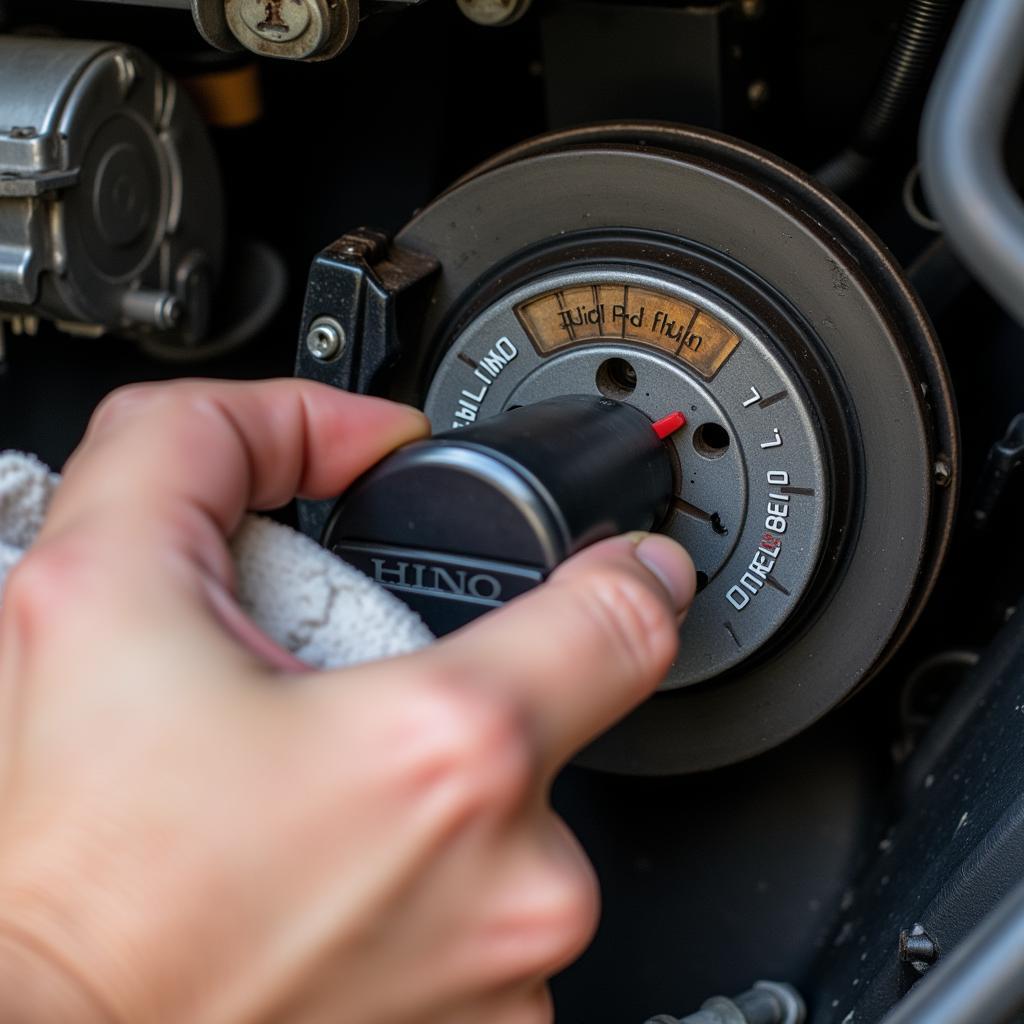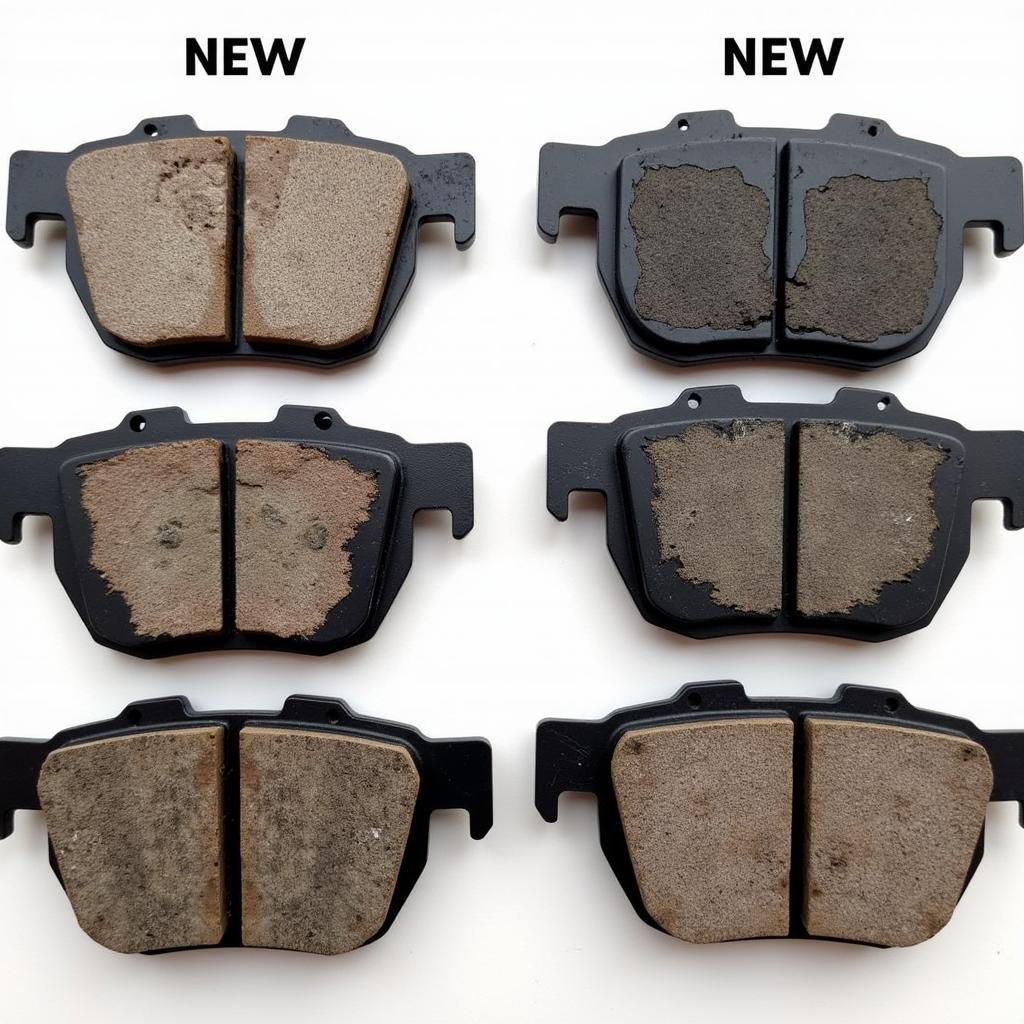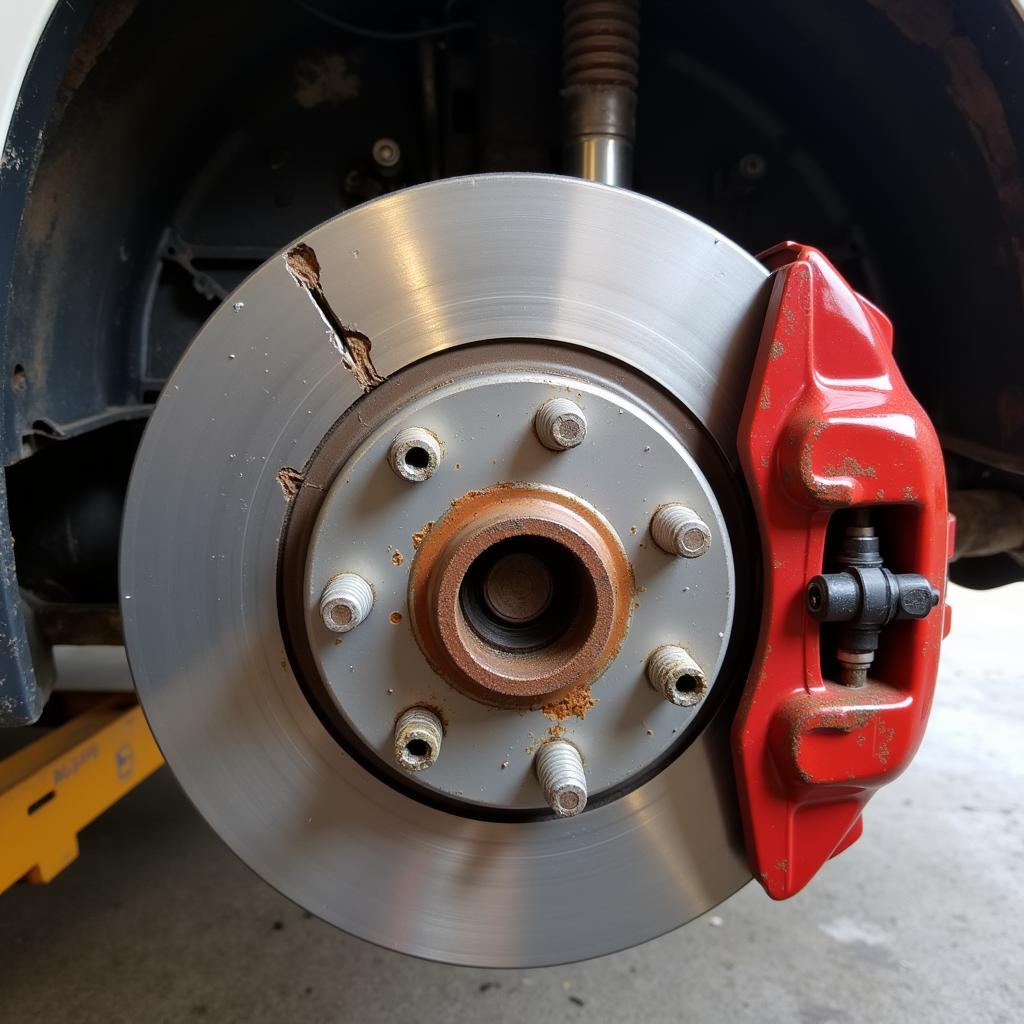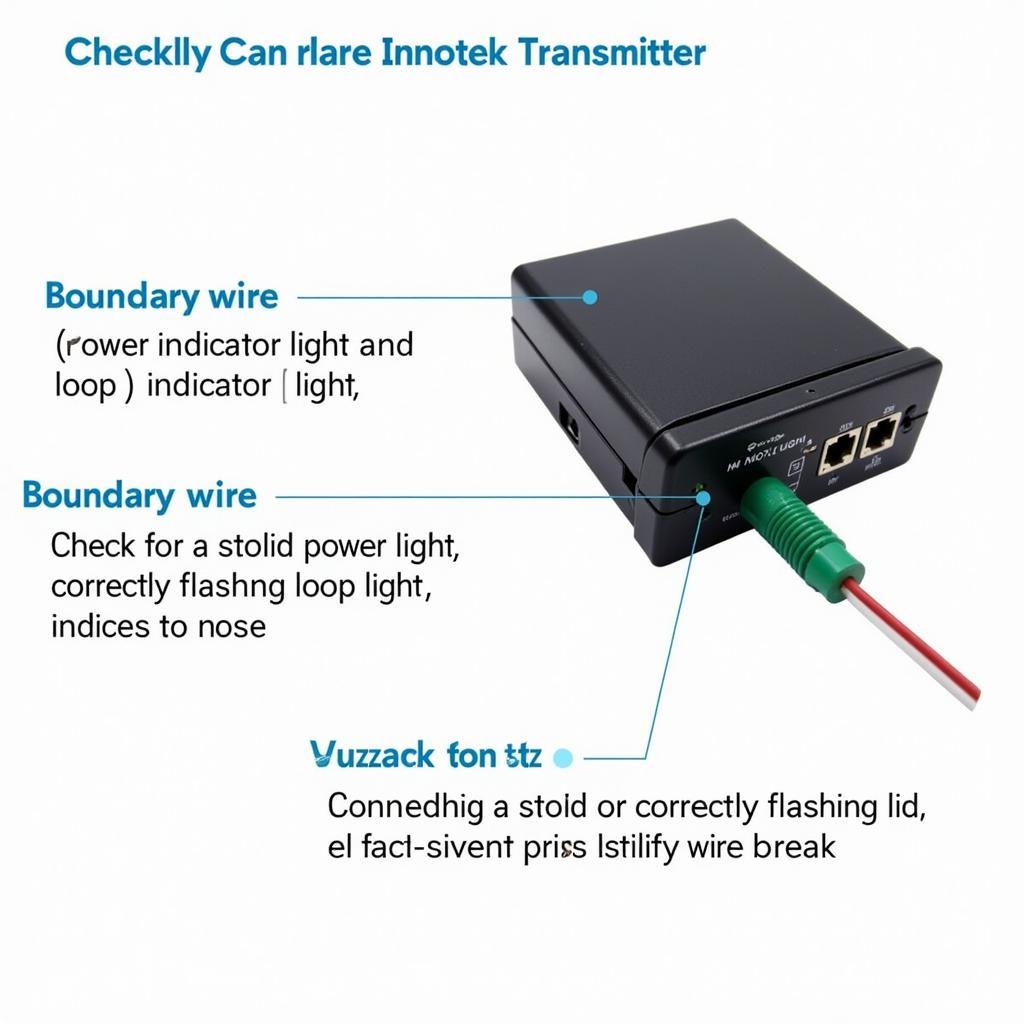The brake warning light on your Hino 500 is a crucial safety feature that shouldn’t be ignored. When illuminated, it signifies a potential problem within your braking system that requires immediate attention. While a mechanic should always diagnose the issue, understanding the common causes and basic troubleshooting steps can help you take appropriate action and ensure your safety on the road.
Understanding Your Hino 500 Brake System
Before diving into the troubleshooting process, it’s beneficial to understand the basics of your Hino 500’s braking system. It consists of several interconnected components, including:
- Hydraulic system: This system utilizes brake fluid to transmit force from the brake pedal to the wheels, enabling the vehicle to slow down or stop.
- Air brake system: Commonly found in heavy-duty trucks like the Hino 500, this system uses compressed air instead of hydraulic fluid to operate the brakes.
- Electronic components: Modern braking systems often integrate electronic components like sensors and modules to enhance safety and performance.
A malfunction in any of these components can trigger the brake warning light.
Common Causes of a Hino 500 Brake Warning Light
Identifying the potential cause behind the illuminated brake warning light is the first step towards resolution. Some of the most common culprits include:
- Low brake fluid level: One of the most frequent reasons for the warning light is a low brake fluid level, indicating a possible leak in the hydraulic system.
- Worn brake pads: Brake pads wear down over time, and excessively worn pads can trigger the warning light, signaling the need for replacement.
- Faulty brake sensor: Modern Hino 500s are equipped with sensors that monitor various brake components. A malfunctioning sensor can send a false signal, illuminating the warning light.
- Air leak in the air brake system: For Hino 500s equipped with air brakes, an air leak in the system can lead to a drop in air pressure, triggering the warning light.
- Issues with the ABS system: Problems with the Anti-lock Braking System (ABS), such as a faulty ABS module or sensor, can also activate the warning light.
Troubleshooting the Hino 500 Brake Warning Light
While it’s crucial to have a qualified mechanic diagnose the specific issue, here are some initial steps you can take to troubleshoot the brake warning light on your Hino 500:
-
Check the brake fluid level: Park your Hino 500 on a level surface and locate the brake fluid reservoir under the hood. Check the fluid level and add the appropriate brake fluid if it’s low. However, be cautious as a sudden drop in brake fluid level often indicates a leak, requiring immediate professional attention.
 Checking the Brake Fluid Level
Checking the Brake Fluid Level -
Inspect the brake pads: If your Hino 500 has recently undergone maintenance or if you suspect worn brake pads, visually inspect them for wear and tear. If the pads appear thin or damaged, consult a mechanic for replacement.
 Inspecting Worn Brake Pads
Inspecting Worn Brake Pads -
Check for visible leaks: Carefully examine the area around the brake lines, calipers, and wheel cylinders for any signs of fluid leaks. Leaks can manifest as wet spots, drips, or puddles beneath the vehicle. If you detect a leak, refrain from driving and immediately contact a mechanic.
 Identifying Brake Fluid Leaks
Identifying Brake Fluid Leaks -
Listen for unusual noises: Pay close attention to any unusual noises emanating from the brakes while driving. Screeching, grinding, or clicking sounds can indicate worn brake components or other issues that require professional attention.
-
Monitor the brake pedal feel: While driving, be mindful of the brake pedal feel. A spongy, soft, or unusually hard brake pedal can indicate air in the brake lines or other problems within the braking system.
Expert Insight from Mark Williams, Senior Automotive Technician: “Never ignore a brake warning light, even if the brakes seem to be working fine. It’s always best to err on the side of caution and have a professional inspect your braking system.”
-
Utilize remote diagnostics: Many modern Hino 500 models offer remote diagnostic capabilities. Contact your fleet manager or a qualified technician who can remotely access your vehicle’s systems, retrieve diagnostic trouble codes, and provide insights into the potential cause of the brake warning light.
Expert Insight from Sarah Thompson, Fleet Management Specialist: “Remote diagnostics can save valuable time and money by identifying potential issues before they escalate. Utilizing this technology can significantly reduce vehicle downtime and improve overall fleet efficiency.”
Conclusion
A glowing brake warning light in your Hino 500 is a serious concern that should never be ignored. While initial troubleshooting can provide valuable clues, it’s crucial to seek professional assistance for accurate diagnosis and repair. Remember, a properly functioning braking system is paramount for your safety and the safety of others on the road. By addressing the issue promptly and proactively, you can ensure optimal vehicle performance and peace of mind.

